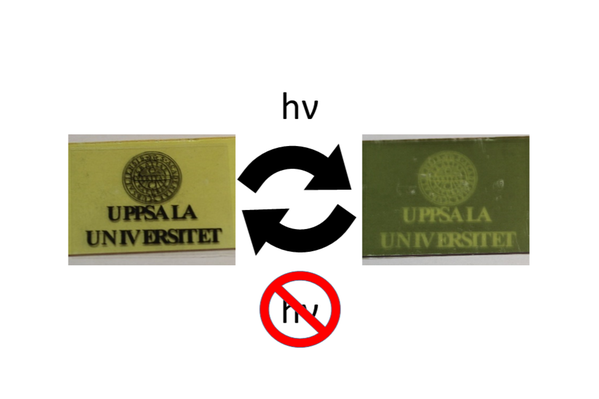Energy materials
Materials can play a decisive role in reaching many UN Sustainable Development goals. As resource effectiveness is mandatory, accurate materials characterisation can help to tailor synthesis and screening for new materials properties. The Tandem Laboratory has a specific focus on energy related materials and our capabilities and expertise within ion beam analysis and materials growth have contributed to many areas of research from lithium-ion batteries to fusion materials.
Within this context we are also developing the new experimental platform LigHt which focusses on advanced light-element characterisation under dynamic conditions in an integrated approach.
Below you can read about several of our focus areas within the field of energy materials: Hydrogen storage materials, Fusion materials, and Photochromic materials.
Hydrogen storage materials
When hydrogen is introduced into various metals, hydrides are formed, a characteristic that can be used for hydrogen storage applications. At the Tandem Laboratory, we study hydrides in different transition metal alloys and systems of reduced dimensionality that can offer high loading capacities and reversible hydrogen storage solution. Ion beam analysis methods can be employed to accurately obtain the chemical composition of these alloys and to quantify and depth profile hydrogen. It is even possible to gain information on hydrogen site locations and induced changes to the lattice of the host material.
Fusion materials
In future fusion reactors, the materials used for walls and other parts will be subjected to extreme conditions from the fusion plasma. At the Tandem Laboratory we can perform in-situ and real-time laboratory-scale studies to investigate the formation and modification of these plasma-facing components under reactor-relevant conditions. We also analyse tiles and samples removed from tokamaks after experimental campaigns to estimate fuel retention and materials modification caused by reactor operation. Our fundamental research on ion-solid interactions provides relevant nuclear data for simulations of fusion environments as well as further improves our capabilities within ion beam analysis.
The thin film in the image to the right darkens when it is illuminated by light and again becomes transparent when the light is switched off. Photochromic materials like that change their optical properties as a response to electromagnetic radiation, and therefore have the potential to be employed as smart windows or sensors. At the Tandem Laboratory we study the photochromic properties of different rare-earth metal hydrides. We can fabricate photochromic films in-house and even change their properties by ion beam induced modifications. Our capabilities in (in-situ) ion beam analysis allow us to investigate the influence of chemical composition on the photochromic effect under different conditions. Studies on optical transmission as well as pump-probe experiments can be performed at our OSFOLD set-up.

Selected publications
Part of International journal of hydrogen energy, p. 583-588, 2024
- DOI for Accurate measurement of hydrogen concentration in transition metal hydrides utilizing electronic excitations by MeV ions
- Download full text (pdf) of Accurate measurement of hydrogen concentration in transition metal hydrides utilizing electronic excitations by MeV ions
Part of Nuclear Materials and Energy, 2023
- DOI for Thin films sputter-deposited from EUROFER97 in argon and deuterium atmosphere: Material properties and deuterium retention
- Download full text (pdf) of Thin films sputter-deposited from EUROFER97 in argon and deuterium atmosphere: Material properties and deuterium retention
Interstitial Hydrogen in Fe/V Superstructures: Lattice Site Location and Thermal Vibration
Part of Physical Review Letters, 2021
- DOI for Interstitial Hydrogen in Fe/V Superstructures: Lattice Site Location and Thermal Vibration
- Download full text (pdf) of Interstitial Hydrogen in Fe/V Superstructures: Lattice Site Location and Thermal Vibration
Part of Nuclear Instruments and Methods in Physics Research Section B, p. 36-40, 2020
Photochromic Mechanism and Dual-Phase Formation in Oxygen-Containing Rare-Earth Hydride Thin Films
Part of Advanced Optical Materials, 2020

